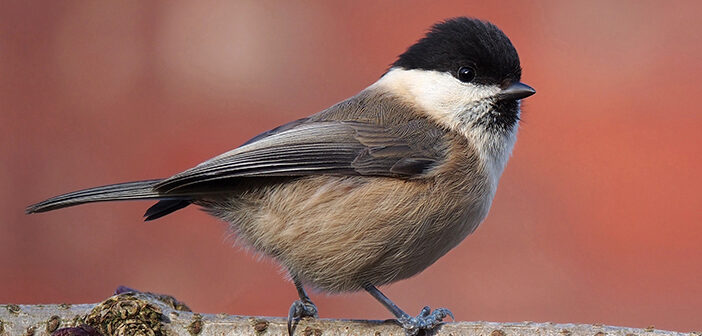WARRINGTON’S Woolston Eyes Nature Reserve, home of the rare Willow Tit, is to benefit from new Natural England funding to help support endangered species.
It is one of 63 projects throughout Cheshire, Lancashire and Merseyside awarded a share of £14.5 million to support 150 species recovery across England.
Along with the Willow Tit, some of England’s most rare and threatened species – including the large marsh grasshopper, native white-clawed crayfish, lapwings and water Voles – are to be supercharged on the road to recovery thanks to the multi-million-pound grant scheme.
The Species Recovery Programme Grant Scheme supports targeted action to recover our most endangered species. The funding will support efforts to fine-tune habitat conditions for our rarest species, and actions such as propagation, captive rearing, translocations, research and solution-trialling to find the best approaches to enable endangered wildlife to survive and thrive.
England’s wildlife is facing extreme pressures – habitat fragmentation, climate change and invasive species have created huge declines, with average species abundance falling by 52%. Numbers of the Duke of Burgundy Butterfly, for example, have declined by some 50% in the last 20 years.
In Warrington, Woolston Eyes Nature Reserve, a Site of Special Scientific Interest (SSSI), has received funding to enable further improvements in habitat management, trialling new techniques which aim to mimic natural processes over extensive areas and to return the population of willow tits to their previous high levels.
Willow tits are currently the fastest declining resident bird species in the UK with a 94% reduction in numbers since 1970. Woolston Eyes SSSI has traditionally been a stronghold for this species with 40 years’ worth of monitoring data. Until recently the Reserve regularly supported a population of 25-30 breeding pairs (up to 0.7% of the UK population) but recent ringing data shows an apparent decline to around 17-20 pairs.
The project is being led by Woolston Eyes Conservation Group (WECG), a voluntary organisation that manages the site, which is owned by Peel Ports. The study and conservation of wildlife and habitats within the area will also support species such as soprano pipistrelle and brown long-eared bats, woodcocks and great crested newts.
Amanda Wright, Natural England Nature Recovery Manager for Cheshire to Lancashire Area Team said: “Woolston Eyes is an amazing site for wildlife, providing a hotspot for so many species across a unique man-made site which is owned by Peel Ports, and supported by the RSPB.
“Woolston Eyes Conservation Group have created a mosaic of habitats across the site and with this funding will be able to support further wildlife benefits, especially for the endangered Willow Tit.”
Other projects to receive funding from Natural England in Cheshire, Lancashire and Merseyside include:
Riverthrive by Cheshire Wildlife Trust. The project will create a network of interconnected wetland habitats across the landscape including ponds, reedbeds, riparian habitats and reprofiling canalized river sections. It will also support the migration of the European eel and other freshwater fish by removing weir and penstock structures and reconnecting the river to its historic channel.
Liverpool City Region Farmland Species Recovery Project by Merseyside Environmental Advisory Service (MEAS). This project works collaboratively with farmers, encouraging sustainable and regenerative practices for the benefit of wildlife and people by targeting marginal, underused and less productive land to trial and deliver species recovery interventions.
Mersey Coastal Breeding Birds by Mersey Gateway Environmental Trust. The aim of this project is to increase the amount of suitable habitat for ground nesting birds with a particular focus on lapwing, skylark, ringed plover and oystercatchers. New breeding habitats for these species will be created by enhancements at three locations within the Mersey estuary.
Protecting Lowland Breeding Waders by RSPB- This project will support the recovery of three key lowland breeding wader species including lapwing, redshank and black-tailed godwitby by installing predator-exclusion fences at three priority lowland wet grassland sites, Burton Mere Wetlands, Nene Washes and Higham Marshes.
Tony Juniper, Chair of Natural England, said: “Nature is in drastic decline all around us, with England now one of the most nature-depleted countries in Earth. Many once-common animals and plants are much reduced with some 15 per cent of species at risk of becoming extinct here.
“It’s a dire situation, but can still be turned around. We know this because we’ve seen the population of the once-endangered Bittern rise dramatically, the recovery of the Fen Raft Spider and Water Voles successfully reintroduced to areas from where they had previously been lost. The partnership projects we are highlighting today demonstrate the power of collaborative action to reverse species decline and we look forward to seeing positive practical progress as a result of the investments being made”.
The money has been awarded following a competitive application round and will be used by environmental charities, wildlife organisations, local authorities and charities in projects across the country.
The projects will help deliver the Nature Recovery Network, creating, improving and connecting more wildlife-rich areas benefitting people and helping species to thrive.
The projects will also provide new opportunities for people to experience the well-being benefits of accessing the natural world, and help build resilience to climate change while sustaining the vital ecosystems that provide us with healthy soil, clean air and water.
Improving strongholds for wildlife and investing in long-term species recovery will help achieve the government’s pledge to reduce species extinction by 2042 compared to 2022 levels, restore more than 500,000 hectares of wildlife habitat, and increase species abundance as set out in the Environmental Improvement Plan.




